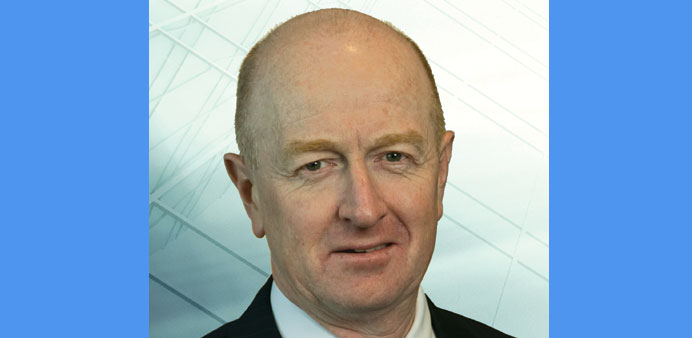AFP/Sydney
Australia yesterday kept interest rates at 2% after slashing them to a record low last month, and called for a weaker currency to help counter a sluggish economy struggling with soft business spending.
The Reserve Bank of Australia has been loosening monetary policy as the country exits an unprecedented China-driven mining investment boom and non-resources industries strain to fill the gap.
Despite not cutting rates further, it signalled a mild easing bias after its monthly meeting.
“Having eased monetary policy last month, the board today judged that leaving the cash rate unchanged was appropriate at this meeting,” Reserve Bank of Australia governor Glenn Stevens said in a statement.
“Information on economic and financial conditions to be received over the period ahead will inform the board’s assessment of the outlook and hence whether the current stance of policy will most effectively foster sustainable growth and inflation consistent with the target.”
The Australian dollar traded half a US cent higher at 76.74 US cents after the decision as financial markets had expected a clearer easing bias.
The RBA’s decision was widely expected by analysts, who said the central bank would sit on the sidelines as it waits to see if its two 25 basis point cuts this year – one in February and another in May – lift economic growth.
“I think they’re still prepared to cut rates but I think they didn’t want to go so far to signal a near-term move,” Barclays’ chief economist for Australia Kieran Davies told AFP.
“The housing market is giving them pause for thought.” Stevens noted that house prices continued to increase strongly in Sydney, although growth trends were more varied in other cities.
Economists have said lower interest rates could overheat the already booming residential property sectors in the two biggest cities Sydney and Melbourne.
Stevens warned that business spending remained soft and was a “key drag” on private demand. Weak capital expenditure data last week showed non-mining firms were still reluctant to spend.
“Weakness in business capital expenditure... is likely to persist over the coming year. Public spending is also scheduled to be subdued,” the governor said.
“Overall, the economy is likely to be operating with a degree of spare capacity for some time yet.”
The central bank maintained its call for a weaker exchange rate, saying “further depreciation seems both likely and necessary, particularly given the significant declines in key commodity prices”.
Weakening commodity prices, particularly Australia’s largest export iron ore, have hurt the economy and squeezed government revenue.
The RBA meeting came ahead of an official reading of economic growth in the first three months of this year, due today.
The data is forecast to show that GDP expanded by 0.5% in the first-quarter to take annual growth to a below-trend 1.9%.
Economists said further weak data could see another rate cut this year.
“While the RBA emphasised the need for monetary policy to be accommodative, it remains mindful of the limitations of monetary policy, while also cognisant of the risks of an overheating housing market,” ANZ bank’s co-head of Australian economics Felicity Emmett said.
“These two factors suggest that the bar for further rate cuts remains high.”

Stevens: Leaving the cash rate unchanged is appropriate.


